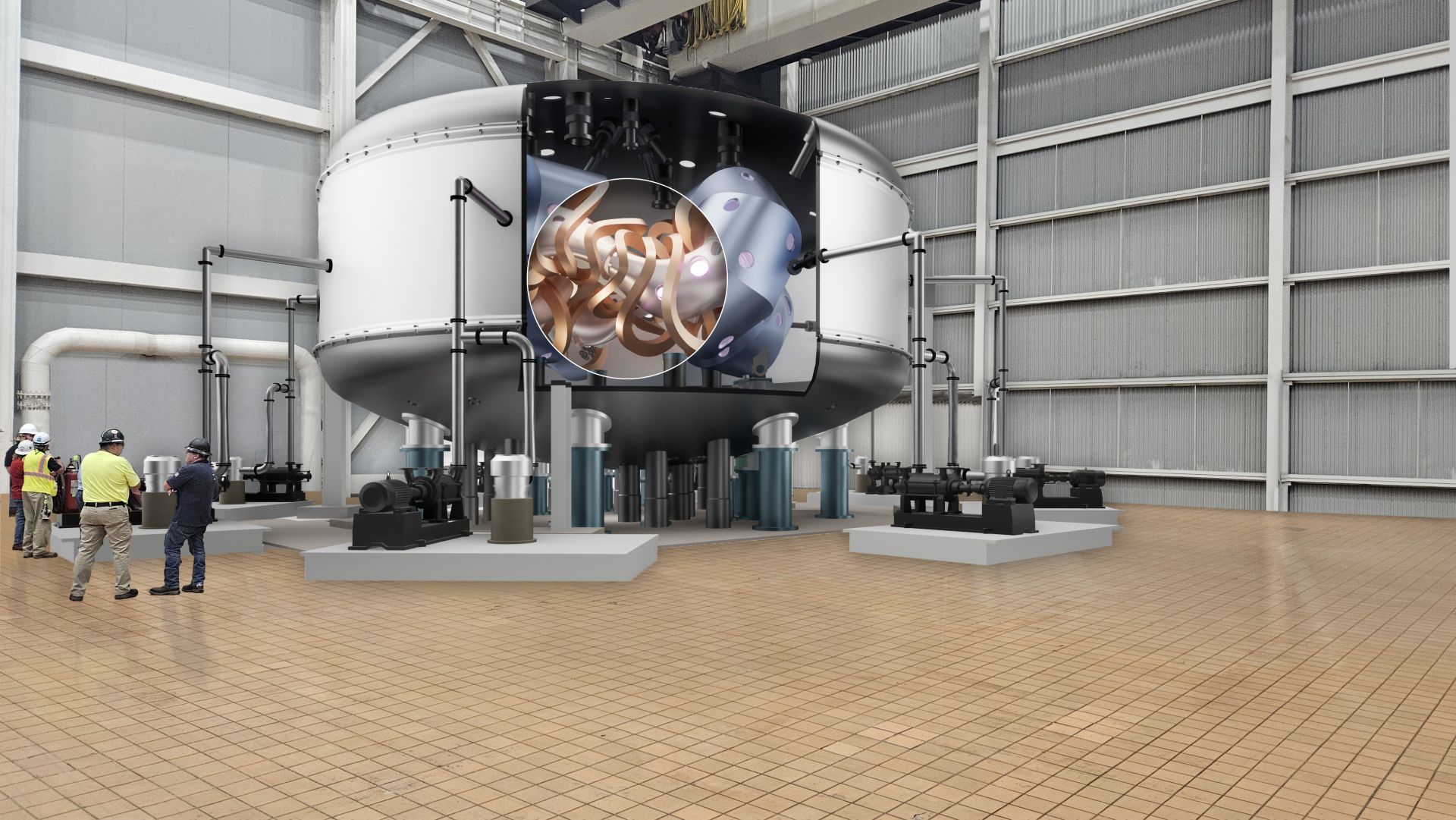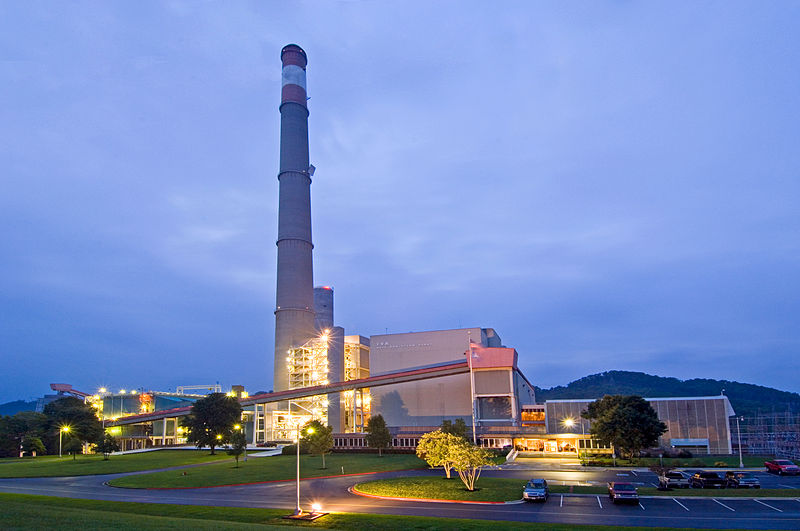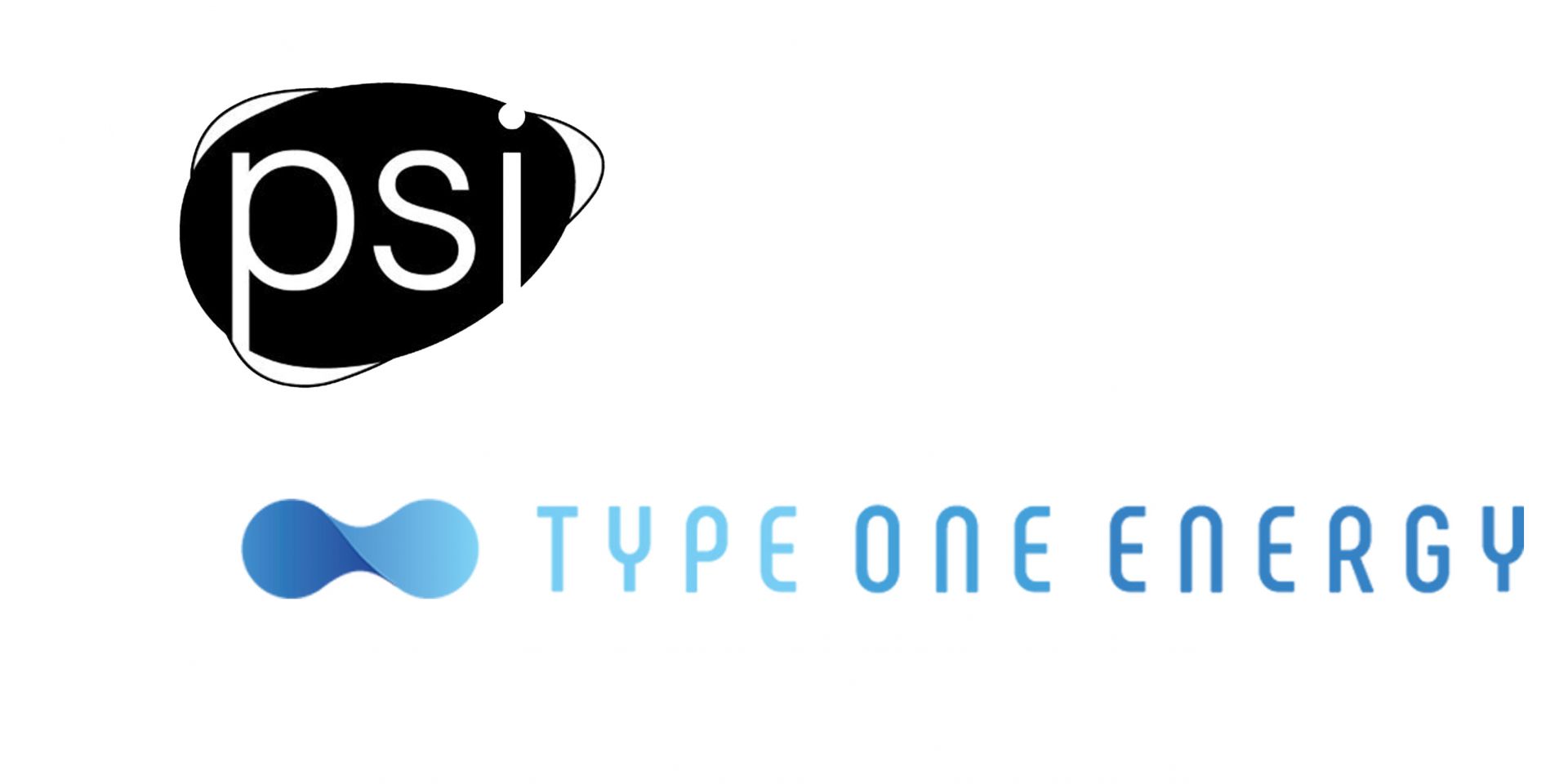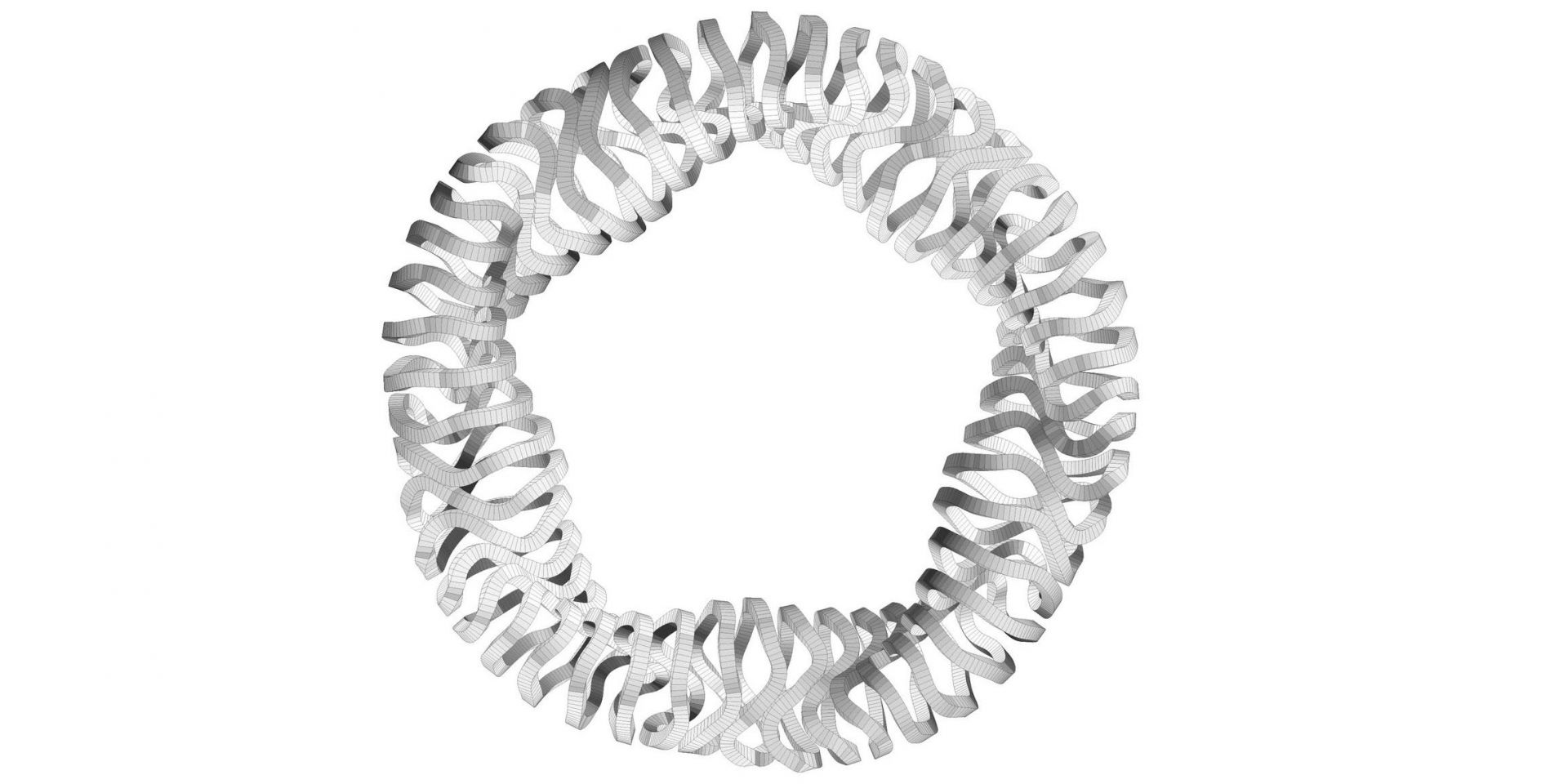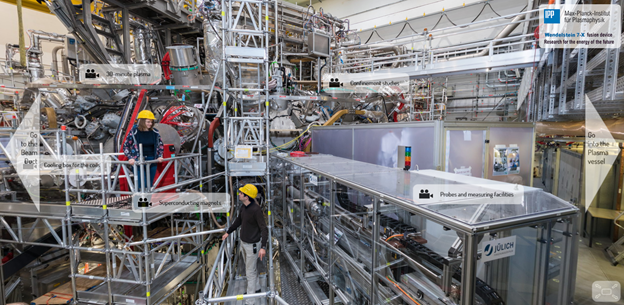Concept art showing Type One Energy’s Infinity One prototype stellarator inside TVA’s Bull Run fossil plant. (Photo/Image: Business Wire)
Fusion startup Type One Energy has announced the publication of a baseline physics design basis for its proposed Infinity Two stellarator fusion pilot power plant. The design basis was published in a series of seven papers in a special issue of the Journal of Plasma Physics. According to the company, the design basis realistically considers for the first time the relationship between competing requirements for plasma performance, power plant startup, construction logistics, reliability, and economics utilizing actual power plant operating experience.
Concept art showing Type One Energy’s Infinity One prototype stellarator inside TVA’s Bull Run fossil plant. (Photo: Business Wire)
Type One Energy said it has entered into a cooperative agreement with the Tennessee Valley Authority to jointly develop plans for a potential TVA fusion power plant project in the Tennessee Valley region using Type One Energy stellarator fusion power technology. The company said its 350-MWe fusion pilot power plant, named Infinity Two, could provide a complementary source of baseload electrical generation for the region as early as the mid-2030s.
TVA's Bull Run fossil plant. (Photo: TVA)
Type One Energy Group announced plans on February 21 to relocate its headquarters from Madison, Wis., to the Tennessee Valley Authority’s (TVA) Bull Run fossil plant in Clinton, Tenn., where it will build a stellarator fusion prototype machine. According to the company, the construction of the stellarator—called Infinity One—could begin in 2025, if necessary environmental reviews, partnership agreements, permits, and operating licenses are all in hand.
The magnet system of Wendelstein 7-X features 50 superconducting magnet coils. (Graphic: IPP)
The Max Planck Institute for Plasma Physics (IPP) was founded in Garching, Germany, in 1960, the same year that its Wendelstein 1a stellarator began operation. Wendelstein 7-X is now operating at IPP’s site in Greifswald, Germany, and one of the objectives the device was designed to achieve has recently been confirmed, IPP announced on August 12. Analysis by IPP scientists shows that the twisted magnetic coils of the device successfully control plasma energy losses, indicating that stellarator fusion devices could be suitable for power plants, according to a detailed analysis of experimental results published on August 11 in Nature.
The Max Planck Institute for Plasma Physics offers an interactive and informative 360-degree panoramic tour of Wendelstein 7-X. (Source: ipp.mpg.de)
U.S. scientists are getting funding to carry out seven research projects at two major stellarator fusion energy facilities located in Germany and Japan, the Department of Energy announced on June 8. A total of $6.4 million has been allocated for seven research projects with terms of up to three years.
